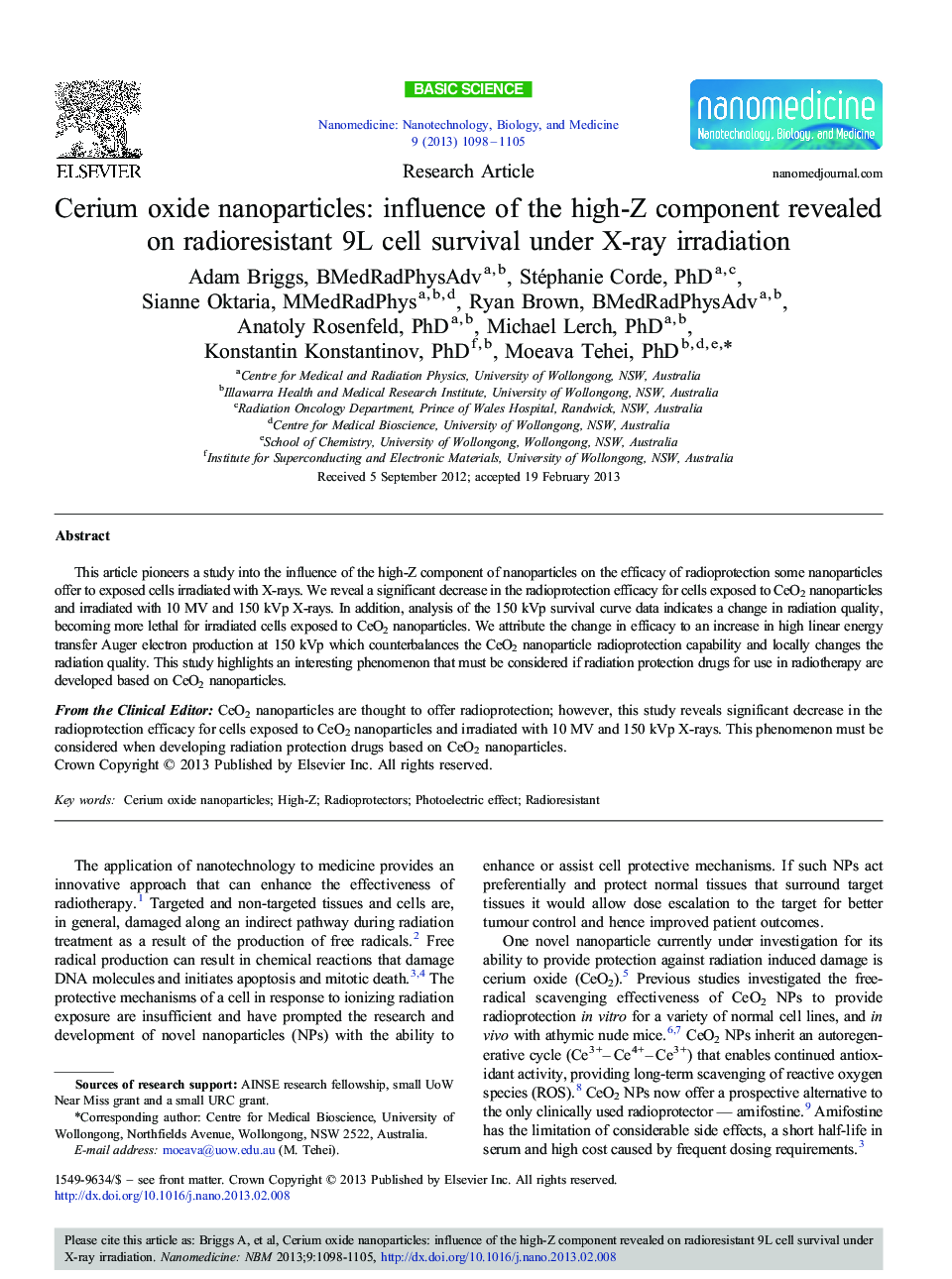| کد مقاله | کد نشریه | سال انتشار | مقاله انگلیسی | نسخه تمام متن |
|---|---|---|---|---|
| 877561 | 911033 | 2013 | 8 صفحه PDF | دانلود رایگان |

This article pioneers a study into the influence of the high-Z component of nanoparticles on the efficacy of radioprotection some nanoparticles offer to exposed cells irradiated with X-rays. We reveal a significant decrease in the radioprotection efficacy for cells exposed to CeO2 nanoparticles and irradiated with 10 MV and 150 kVp X-rays. In addition, analysis of the 150 kVp survival curve data indicates a change in radiation quality, becoming more lethal for irradiated cells exposed to CeO2 nanoparticles. We attribute the change in efficacy to an increase in high linear energy transfer Auger electron production at 150 kVp which counterbalances the CeO2 nanoparticle radioprotection capability and locally changes the radiation quality. This study highlights an interesting phenomenon that must be considered if radiation protection drugs for use in radiotherapy are developed based on CeO2 nanoparticles.From the Clinical EditorCeO2 nanoparticles are thought to offer radioprotection; however, this study reveals significant decrease in the radioprotection efficacy for cells exposed to CeO2 nanoparticles and irradiated with 10 MV and 150 kVp X-rays. This phenomenon must be considered when developing radiation protection drugs based on CeO2 nanoparticles.
Graphical AbstractA counterbalance exists between radioprotection and enhancement for CeO2 NPs. The influence of this high-Z property is revealed on radioresistant 9L cells, where greater radioprotection was achieved using 10 MV photons in comparison to that achieved when using 150 kVp X-rays. At lower energies, high-LET Auger electron cascades create clustered, indirect and dominant direct damages and free radicals that are scavenged by CeO2 or recombine resulting in formation of H2O. Conversely, at higher energies, low-LET secondary electrons create dominantly free radicals that both: are scavenged by CeO2 NPs and can indirectly damage DNA. This unique mechanism should be considered throughout all nanoparticle based radiotherapy where high-Z nanoparticles such as CeO2 are used.Figure optionsDownload high-quality image (104 K)Download as PowerPoint slide
Journal: Nanomedicine: Nanotechnology, Biology and Medicine - Volume 9, Issue 7, October 2013, Pages 1098–1105